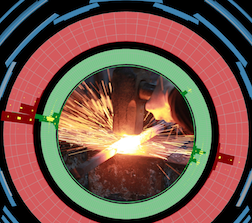Speaker
Description
Observable primordial tensor modes in the cosmic microwave background (CMB) would point to a high scale of inflation $H_{I}$. If the scale of Peccei-Quinn (PQ) breaking $f_a$ is greater than $\frac{H_{I}}{2\pi}$, CMB constraints on isocurvature naively rule out QCD axion dark matter. This assumes the potential of the axion is unmodified during inflation. We revisit models where inflationary dynamics modify the axion potential and discuss how isocurvature bounds can be relaxed. We find that models that rely solely on a larger PQ-breaking scale during inflation require late-time dilution of the axion abundance. Even then, $f_a$ must be below the grand unification scale. Models that have enhanced explicit breaking of the PQ symmetry during inflation may allow $f_a$ close to the Planck scale. Avoiding disruption of inflationary dynamics provides important limits on the parameter space.
